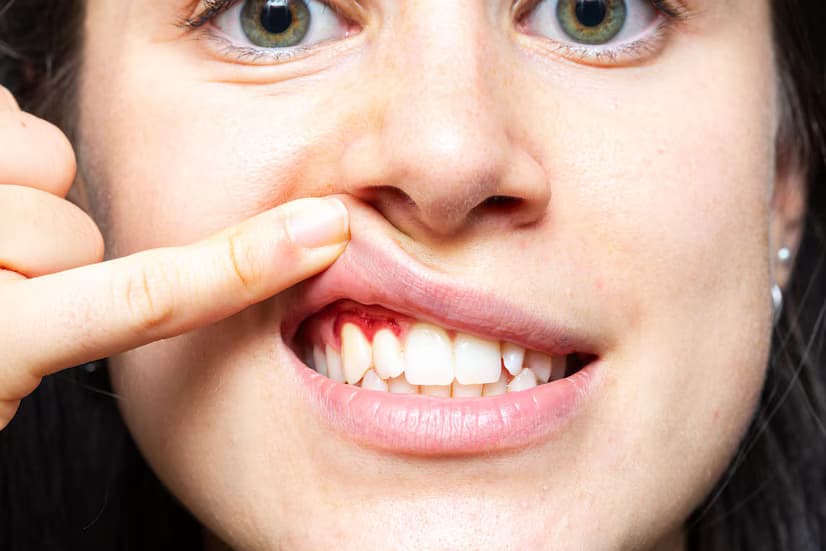Why Bleeding Gums Aren’t “Normal” and How to Get the Right Treatment

Strong 8k brings an ultra-HD IPTV experience to your living room and your pocket.
If your gums bleed when you brush or floss, you are not alone; many people face this problem. Many people notice pink in the sink and think it’s no big deal. Some even believe it’s a sign they’re brushing well. But here’s the truth: bleeding gums are never normal, and ignoring them can lead to bigger problems down the line.
Bleeding gums are often the first indication of gum disease. And without the right treatment, that can lead to infections, tooth loss, and even health issues beyond your mouth. The good news? Early bleeding gums treatment can stop the damage, reverse the cause, and protect your smile.
Let’s break down why bleeding happens, what it really means, and how to treat it the right way.
Why Do Gums Bleed?
Healthy gums don’t bleed. So if yours do, it’s usually your body’s way of telling you something’s wrong.
Most often, bleeding is caused by a buildup of plaque, a sticky mix of food particles and bacteria, along the gumline. If not cleaned properly, plaque can harden into tartar, which irritates the gums. This leads to gingivitis, the earliest stage of gum disease.
Other causes can include:
Brushing too hard
Flossing incorrectly or too aggressively
Hormonal changes (such as during pregnancy)
Certain medications
Smoking or vaping
Poor-fitting dental work
While some cases might be mild, regular bleeding is a red flag that you need professional bleeding gums treatment before the condition worsens.
The Myth: “Bleeding Means I’m Brushing Too Well”
One of the biggest myths out there is that bleeding gums mean you’re brushing correctly, or too hard. While brushing aggressively can sometimes cause bleeding, most of the time the bleeding comes from inflammation under the surface.
Even if you brush and floss every day, bacteria can build up in places your toothbrush can’t reach. That’s why professional cleanings are essential. If your gums bleed regularly, it’s not a sign to stop brushing; it’s a sign to seek expert help.
Why It’s Risky to Wait
Gingivitis, which is the early stage of gum disease, can be reversed. But if left untreated, it can turn into periodontitis. This advanced stage causes permanent damage to the gums and bone that support your teeth. It can also increase your risk for:
Tooth loss
Heart disease
Diabetes complications
Respiratory infections
Preterm birth (in pregnant women)
This is why timely bleeding gums treatment matters. By taking care of your gums, you're not only benefiting your oral health but also safeguarding your overall well-being.
What Bleeding Gums Treatment Looks Like
The treatment you’ll need depends on how advanced the issue is. Here’s what to expect:
1. Professional Cleaning
For early gingivitis, a deep cleaning by your dental hygienist or dentist may be enough. This removes plaque and tartar above and below the gumline.
2. Scaling and Root Planing
If your gum infection has spread deeper, a more thorough cleaning may be needed. This involves cleaning down to the roots of your teeth to remove bacteria and allow the gums to reattach.
3. Antibacterial Rinses or Medication
Your dentist may recommend special mouth rinses or antibiotics to reduce infection and inflammation.
4. Specialist Referral
If the problem is advanced or recurring, you may be referred to a periodontist, a gum specialist. They offer advanced bleeding gums treatment, such as laser therapy, gum surgery, or regenerative procedures to restore damaged tissue.
What You Can Do at Home
Even after professional care, your daily habits make a big difference. Here’s how to protect your gums at home:
Use a soft-bristled toothbrush and brush gently for two minutes
Floss daily (ask your dentist to show you the right way)
Use a mouthwash designed to fight plaque and bacteria
Avoid smoking, which slows healing and weakens gum tissue
Eat a balanced diet that is rich in vitamins and minerals
The earlier you build good habits and get the right bleeding gums treatment, the easier it is to keep your gums healthy for life.
Final Thoughts
Bleeding gums may seem like a small issue, but they’re often a warning sign of something bigger. They’re not something to brush off or “wait out.” With the right treatment and care, bleeding gums can be reversed before they turn into permanent damage.
Whether it’s your first time noticing symptoms or something you’ve ignored for too long, talking to your dentist or gum specialist can give you the answers and relief you need.
Don’t let bleeding gums become a long-term problem. The right bleeding gums treatment can save your smile, one step at a time.
Note: IndiBlogHub features both user-submitted and editorial content. We do not verify third-party contributions. Read our Disclaimer and Privacy Policyfor details.







